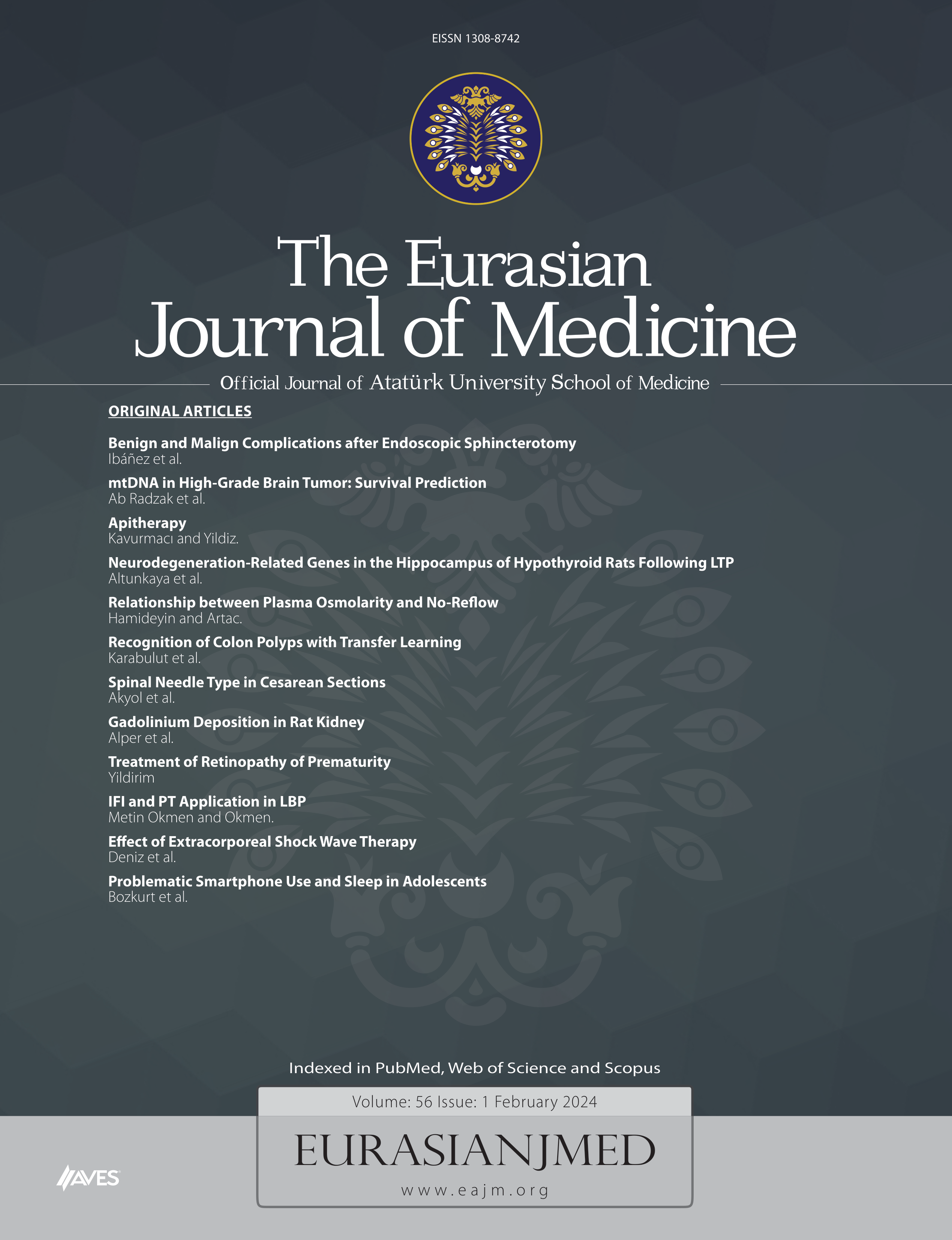Abstract
Objective: Somatosensory evoked potential (SSEP) abnormalities were reported in patients with ankylosing spondylitis (AS). This study aimed to investigate SSEP abnormalities and its relation with clinical findings in AS patients.
Materials and Methods: The study included 26 patients with AS and 17 age-matched health volunteers (Control for SSEP). Median nerve SSEP findings were normal in all AS cases.
Results: However, delayed latency and/or very low amplitude of tibial nerve SSEP was found in 20 (76.9%) AS patients. There were significant correlations between tibial SSEP latency and disease duration (R=0.433 to 0.635). There was also an inverse correlation between tibial SSEP amplitude and disease duration (R=-0.429, p=0.047). Serum estradiol level, hip total bone mineral density, The Bath Ankylosing Spondylitis Functional Index (BASFI) score and Beck depression score were significantly lower in AS patients with SSEP abnormalities (37.3±10.8 pg/mL, 0.916±0.123 g/cm2, 35.0±27.9, 12.8±8.4, respectively) than in AS patients without SSEP abnormalities (53.7±12.3 pg/mL, 1.103±0.197 g/cm2, 64.8±15.5, 24.8±10.1, respectively).
Conclusion: Significant inverse correlations between SSEP latencies and dehydroepiandrosterone sulphate (DHEAS) levels were found (R=-0.400 to -0.713). There were also significant inverse correlation between SSEP latencies and DHEAS/oestrogen index (R=-0.596 to -0.868), and between SSEP latencies and DHEAS/Progesterone index (R=-0.467 to -0.685). As a conclusion, this study indicates that tibial nerve SSEP abnormalities are common in patients with AS and there are significant correlations between clinical findings of AS and SSEP abnormalities.

.png)

.png)
.png)